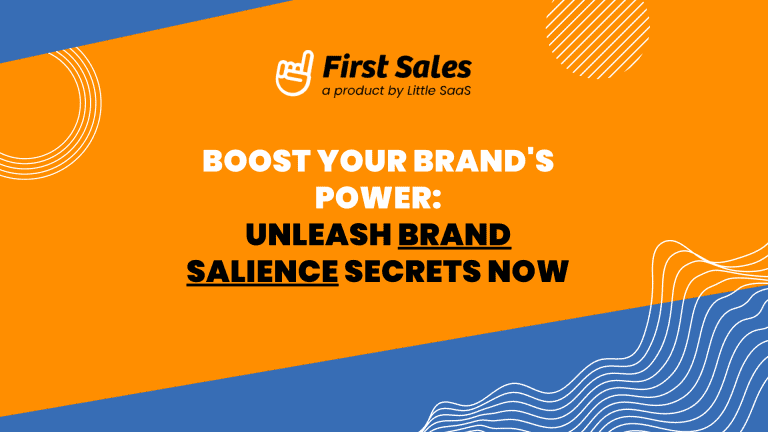Inbound Marketing 101: The Ultimate Guide To Help You Out

Inbound marketing is a term that has been used for years to describe the way companies market themselves. It’s all about building relationships with your audience, not selling them something. Inbound marketing is a lot like dating; you want to
Are you looking for the ultimate guide to content marketing? Do you want to learn how to create great content to help your business succeed?
Inbound marketing has become the new black. It’s not just for big businesses anymore. Small businesses can benefit from inbound marketing as well.
If you’ve never heard of inbound marketing before, you’re missing out on a huge opportunity to boost your business.
In this article, I’ll teach you everything you need to know about inbound marketing. I’ll explain why it works and how you can apply it to your small business.
Statistics
- More than 80 percent of customers conduct online research before deciding what to buy.
- Forty-five percent of abandoned cart emails are opened, and 50 percent of the links are clicked.
- According to Demand Metric, companies with blogs generate 67 percent more leads per month than those who don’t.
- According to Invesp, the average cost of a lead drops 80 percent after five months of consistent inbound marketing.
- According to WVO, out of 100 leading websites, only 11 were responsive.

What is Inbound Marketing?
Inbound marketing is a term used to describe various types of marketing activities that focus on attracting customers instead of pushing products onto them. Inbound marketing includes both traditional and digital methods of advertising.
Traditional inbound marketing involves print ads, radio spots, and television commercials. Digital inbound marketing focuses on creating content that attracts visitors to your website.
These include articles, blogs, videos, podcasts, etc. The goal is to create content that helps people solve problems and answer questions rather than just sell products.
It’s important to remember that inbound marketing doesn’t always require a considerable budget. It can be done through free resources like blogging, guest posting, and social media.
However, if you want to stand out from the crowd, you might consider hiring a professional copywriter specializing in inbound marketing. They have experience writing great content that gets results.
What Is the Purpose of Inbound Marketing? Why is it Important?
Inbound marketing is a marketing strategy that focuses on attracting customers through quality content rather than advertising. It’s a relatively new concept, but it has proven effective for many businesses.
Why is inbound marketing important?
Because it helps companies attract visitors interested in learning more about their products and services.
When potential customers visit your website, they can learn about your business, read helpful articles, and watch videos. It gives them a reason to stay on your site and engage with your brand.
To create inbound marketing content, you must first understand your customer base. What types of topics interest them? How can you provide value to these individuals? Once you figure out what kind of content would appeal to them, you can begin creating it.
For example, if you sell dog food, you might write a blog post about dogs and their health. Or, if you sell furniture, you could write a post about interior design. The possibilities are endless!
How Much Does Inbound Marketing Cost?
There are many ways to approach inbound marketing, including paid campaigns and organic strategies. Some companies pay for search engine optimization (SEO) or other online marketing tactics. Others use SEO as an integral part of their overall marketing plan.
The costs vary depending on how much time you spend working on each piece of content. If you’re planning to hire someone to write all of your content, you’ll likely need to pay them per hour. You may also need to purchase software or tools to help you manage the process.
If you decide to go the DIY route, you’ll need to buy domain names, hosting, and other equipment. Depending on the size of your company, this could cost anywhere between $100-$1,000.
Common problems that Inbound Marketing can Solve:

Inbound marketing is a powerful tool for businesses that want to attract customers through quality content. However, many companies struggle with implementing effective inbound marketing strategies. Here are some common problems that inbound marketing can solve:
1. Poorly written content:
Content is king, and if you want to attract visitors to your website, you need to write quality content.
But sometimes, just writing quality content isn’t enough. Sometimes, you need to write content that works. That means making sure that your content is easy to read, understand, and share.
To accomplish this, you need to focus on three main areas: grammar, spelling, and formatting. Grammar errors can distract readers from understanding your message, while misspelled words can confuse them.
Formatting errors can make your content look unprofessional, and poor formatting can lead to low engagement rates.
Make sure that you proofread everything before you publish it online. And if you notice any mistakes after publication, fix them immediately. The last thing you want is for your readers to feel annoyed or confused by your content.
2. Lack of customer service:
Inbound marketing is all about building relationships with customers. It’s about providing value and helping customers solve problems. When you provide excellent customer service, you can build trust and loyalty among your customers.
It means that if someone has a problem with your company, you should always try to resolve it as soon as possible.
Don’t let customers wait too long to get their issues resolved. Ensure that you respond to emails within 24 hours and follow up with phone calls if necessary.
It’s also important to offer free trials and demos. These allow customers to test products without committing to complete a purchase. Free trials will enable you to collect valuable feedback from potential customers.
Lastly, remember that you can never stop improving your customer service skills. The best companies are constantly trying to improve their services, including responding to emails and resolving customer complaints.
3. Low conversion rates:
Conversion rates are low because visitors aren’t finding what they’re looking for. If you want to increase your conversion rates, you need to figure out where your customers are falling off. It could be that your landing pages are too long or missing vital elements. Or maybe your sales funnel is confusing or unclear.
Inbound marketing can help solve these issues by providing clear calls to action, easy navigation, and helpful content.
When people visit your website, they should be able to easily find what they’re looking for without having to dig through tons of irrelevant content. Ensure that your website has a strong focus and that everything is organized into logical sections.
Also, make sure that your content is valuable and valuable to your target audience. People interested in your products will appreciate the quality of your content, while those who aren’t interested will likely click away from your site.
4. Unclear messaging
Inbound marketing is about creating content that helps customers solve their problems. The best way to accomplish this is through clear messaging. Writing copy needs to be concise and easy to understand when you write copy. It should also include helpful tips and solutions that address common customer issues.
Make sure that your copy includes these three elements:
• A problem statement: Describe exactly what the reader is experiencing.
• An offer: Tell them what you’re offering to fix the issue.
• A solution: Explain how your product or service solves the problem.
This type of copywriting is effective because it gives the reader a reason to act. Plus, it shows that you care about solving their problems.
5. Slow response times
One of the biggest challenges that many businesses face today is the inability to respond to customers within a reasonable amount of time. The problem stems from the fact that most companies operate under the assumption that they must react immediately to customer requests.
However, if you look back over the history of business, you’ll notice that most successful companies built long-term relationships with their customers.
In other words, they didn’t just wait for customers to ask for their products or services; instead, they built a relationship with them based on trust and respect.
Once these companies had established a strong rapport with their customers, they could easily anticipate their needs and provide them with exactly what they wanted.
It is where Inbound Marketing comes into play. It allows you to create a relationship with your customers without worrying about whether they’re asking for your product or service.
Instead, you can focus on providing them with valuable content that helps them solve their problems.
In addition to building relationships with your customers, Inbound Marketing also helps you attract new leads. When potential customers visit your website, they’ll see that you offer solutions to their problems.
As a result, they’ll become interested in learning more about your company and signing up for your newsletter.
The bottom line? Building relationships with your customers is essential to running a successful business. But it doesn’t have to be complicated. With Inbound Marketing, you can establish a strong connection with your customers while still managing your day-to-day operations.

6. High costs
Inbound marketing is a relatively inexpensive method of advertising. It doesn’t cost much to set up a campaign, and it’s easy to scale up if you can generate enough leads.
However, it’s important to remember that inbound marketing takes time to build relationships with customers and prospects.
It means that it will take a while to reach your goals. It might be difficult to justify spending money on marketing until you’ve generated a significant amount of revenue if you’re starting.
But once you’re making money, it’s worth investing in inbound marketing to maintain your lead generation efforts.
One of the biggest challenges of inbound marketing is finding ways to fund it. There are plenty of free resources available online, but many companies still prefer to pay for ads.
The best solution is to combine inbound marketing with other methods of advertising. For example, you could create a landing page that offers a discount to people who sign up for your mailing list.
It’s also important to consider the return on investment (ROI). If you spend $100 on a Facebook ad, you’ll probably get less than 10% of that back.
That’s why it’s essential to test different types of ads and strategies to determine which ones work best for your business.
The bottom line? Inbound marketing is a great way to attract new customers and grow your business. But it’s only effective if you have a plan and know where to focus your efforts.
Don’t let yourself fall into thinking that inbound marketing is too expensive or complicated. Instead, follow these tips to get started today!
7. No clear goals
One of the businesses’ biggest mistakes when implementing inbound marketing tactics is failing to set clear goals. Without clearly defined plans, you won’t be able to measure whether your efforts are working or not.
To avoid this problem, create a detailed plan that includes specific metrics and benchmarks for success. Once you’ve got a solid plan in place, you’ll be able to track your progress and adjust accordingly.
Another common mistake is thinking that inbound marketing is just another form of advertising.
While it does include paid ads, it’s much more than that. It’s a strategic approach to attracting customers through quality content that answers questions and solves problems.
In other words, inbound marketing is about building relationships with potential customers rather than trying to sell them something. That means creating valuable content that helps prospects solve problems and learn about your business.
This type of content doesn’t have to be long-form either. Short videos, infographics, and ebooks are effective ways to attract attention and build trust. The key is to focus on providing value to your audience.
8. Lack of transparency
Inbound marketing is all about building trust between brands and customers. When you build relationships with your customers, they’re likely to buy from you again.
However, if you aren’t transparent about who you are and what you’re doing, you risk losing credibility.
To avoid this problem, make sure that you’re honest about who you are and where you’re coming from.
For example, if you’re trying to sell products online, make sure that you disclose that you’re affiliated with a company. It’s also helpful to include testimonials from satisfied customers. These positive reviews can boost your credibility and give potential buyers confidence in your brand.
Another common issue that inbound marketers face is a lack of transparency. Make sure that you’re open about everything that you’re doing. Don’t hide anything; instead, let people know exactly what you’re doing and why you’re doing what you’re doing. If you’re not transparent about who you are, what you’re doing, and why you’re doing it, you risk losing credibility.
It can be done through blogs, videos, and other forms of content. Once you’re transparent, you’ll gain the trust of your customers, and they’ll be more willing to work with you.
9. Bad user experience
One of the biggest challenges businesses face today is creating a positive user experience. People expect everything from a company to be fast, convenient, and easy to navigate. Unfortunately, many companies fail to deliver these expectations, leaving customers frustrated and dissatisfied.
Inbound marketing helps solve this problem by providing a solution that allows companies to create a positive customer experience. Inbound marketing aims to provide value to customers through quality content that attracts them to your business. Once they become interested in your brand, you can convert them into paying customers.
To achieve this, you must build trust between your customers and your brand. When people feel comfortable interacting with your brand, they’re more likely to buy from you.
It means that you must always strive to create a positive user experience. Make sure that your website is easy to navigate, has clear calls to action, and provides valuable content. Also, make sure that your emails are easy to read and respond to. These small details can make a big difference in whether or not someone decides to purchase from you.
Another common problem that inbound marketing solves is terrible user experience. Many businesses struggle to attract potential customers because they lack a strong online presence. However, if you have a poor user experience, you could lose out on many potential customers.
The best way to avoid this issue is to invest in inbound marketing. With inbound marketing, you can build a solid foundation for your business without spending money on advertising. Instead, you can focus on creating great content that engages your target audience.
Once you have built a strong base of loyal followers, you can begin focusing on conversion rates. It is where you can start making money off of your efforts.
10. Poor social media presence
Social media has become an integral part of many businesses marketing strategies. However, if you haven’t yet set up a solid social media presence, you could be missing out on a huge opportunity.
There are plenty of reasons why having a solid social media presence can benefit your business. For example, it helps build relationships with customers, increases brand awareness, and allows you to share valuable content.
However, if you don’t have an excellent social media presence, you may miss out on all of these benefits. You should also consider how important social media is to your overall marketing strategy. If you plan to use social media as one of your primary channels, you’ll need to ensure that you’re doing enough to get results.
11. Poor analytics
Analytics is crucial to understanding your customers and improving your business. It can tell you if your efforts are working, where your biggest opportunities lie, and what types of content are most effective. Unfortunately, many businesses don’t invest enough time into tracking their performance.
There are several ways to track analytics data, including Google Analytics, HubSpot, and Kissmetrics. Each has its strengths and weaknesses, so choose the one that works best for your needs. Once you’ve selected a tool, set up goals and create reports to monitor progress.

12. Poor customer retention
Customer retention refers to keeping customers happy and coming back for more. When your customers are unhappy, they’ll likely tell others about it. If you don’t provide a solution to their problem, they’ll most likely move on to someone else who does. It’s easy to lose customers if you aren’t providing enough value.
Inbound marketing helps solve these problems by making it easier for businesses to connect with potential customers.
For example, HubSpot allows companies to create personalized landing pages to enable visitors to signup for free trials or subscribe to newsletters. These landing pages are optimized for mobile devices, loading fast and looking great on any device.
HubSpot also provides analytics software to track visitor behavior and measure conversion rates. This data can then determine where improvements need to be made.
Inbound marketing solves other joint problems, including poor lead generation, low conversion rates, and low sales funnels. Inbound marketing helps businesses build stronger relationships with their customers, allowing them to retain existing customers and attract new ones.
Inbound Marketing Content Types
Videos

Video content has become increasingly popular over the past few years. In fact, according to HubSpot, video content now accounts for nearly half of all digital content shared online.
It’s no surprise that videos are becoming a significant part of many marketers’ content strategies. But while videos are easy to create and share, they require a bit of planning and preparation to succeed. That’s where our free guide comes in handy. It provides tips and best practices for creating compelling videos that drive traffic and leads.
Blogs

Blogging is a great way to build authority and establish yourself as an expert in your niche. It’s also a great way to generate leads and drive traffic to your website.
There are many different ways to create blogs, including WordPress, Tumblr, Medium, etc. Each platform has its unique features and benefits, so choose wisely based on your needs. For example, if you plan to write long-form articles, you might consider using Medium instead of WordPress.
Regardless of which blogging platform you decide to use, it’s important to remember that blogging is still a form of content marketing.
You should always include calls-to-action (e.g., subscribe to our mailing list), CTA buttons, and other elements that encourage visitors to take specific actions.
One of the best places to start creating content is your blog. Once you’ve completed your blog, you can then begin posting regularly.
The key here is consistency. Don’t expect instant success; it takes time to build your brand. But over time, you’ll notice that your efforts are paying off.
Pillar pages & topic clusters
One of the most effective ways to organize your content is through pillar pages and topic clusters. Pillar pages are essentially landing pages that serve as hubs for different topics.
For example, if you sell products online, you could create a pillar page called “Products,” which would contain all of your product categories.
It allows visitors to easily navigate your site and find exactly what they’re looking for. Topic clusters work similarly to pillar pages, except instead of having multiple pages, they group related content into a single area. These areas are usually broken down into smaller sections, allowing visitors to navigate between them easily.
For example, if you sell clothing, you might create a cluster called “Clothing.” You’d then break down each category within this cluster into its section, such as “Men’s Tops,” “Women’s Tops,” etc.
These two methods allow you to create a clean, organized layout that keeps visitors interested and helps them find what they’re looking for faster.
Guides or ebooks

Guides and eBooks are two of the most popular forms of content used in Inbound Marketing. These types of content are typically written by experts who have years of experience. Guides and eBooks are perfect for providing helpful tips and tricks to your visitors.
To create guides and eBooks, you’ll need to write a series of articles that cover a specific topic. Once you finish writing these articles, you’ll need to format them into a guide or eBook. The best part about creating guides and eBooks is that they’re easy to share. You can easily send them to friends and family members via email or social media.
Guides and eBooks aren’t just useful for beginners. They’re also practical for experienced marketers who want to provide additional value to their customers. For example, if you run a business that sells products online, you could offer a free eBook that offers tips on how to sell more products.
Guides and Books are also a great way to build trust with your audience. When you give away valuable information for free, you’re showing your audience that you care about them and are willing to help them learn more about your industry.
Guides and books are also an excellent way to earn money from your website. Many companies pay bloggers to publish guides and eBooks. You can then charge a fee for each copy sold.
Social Media

Social media has become a powerful tool for businesses to connect with customers and prospects. It’s easy to create a presence on Facebook, Twitter, LinkedIn, Instagram, Pinterest, and other platforms, and many companies rely heavily on these networks to drive traffic to their websites.
However, most businesses still struggle with creating quality content for social media.
In fact, according to HubSpot, only 29% of B2C marketers and 42% of B2B marketers say that they regularly share content on social media. So if you’re struggling to generate quality content for social media, here are a few tips to get started:
Start with a plan. Before you begin posting, consider who you want to reach and what kind of content you’d like to share. For example, if you run a business, you might want to focus on sharing content related to your industry.
Create a schedule. Once you decide what type of content you’d like to share, set aside specific times each day to post. Scheduling helps you avoid posting during peak hours and ensures that you don’t miss out on opportunities to engage with your followers.
Use visuals. Social media is all about sharing pictures and videos, so make sure that your content includes many visual elements. Images and video tend to receive more engagement than text alone, and so have both.
Don’t forget about the audio. While images and videos are great, sometimes people just want to listen to you speak. Make sure that you have some audio content available on your social channels.
Be consistent. When you publish new content, make sure you follow through on your promise to share it on social media. Don’t wait until someone asks you to share a picture; instead, make sure that you consistently share content at least once per week.
Make it personal. People enjoy interacting with brands that seem human. Try to incorporate photos of yourself into your posts. Include quotes from your company’s employees or clients in your messages. And always remember to thank your followers for following you.
Newsletters

Newsletters are a great way to keep your customers informed about your business. It gives them a chance to learn about your company, but it also helps build trust between you and your customers.
There are many different ways to create newsletters, including ebooks, infographics, videos, and other forms of content. The key is to choose a format that works best for your brand. For example, if you sell products online, consider creating an ebook instead of a video.
Once you’ve decided on the type of content you’d like to include in your newsletter, it’s time to choose where to send it. There are two main options: email and social media. Depending on your goals, either option could work for you.
Email newsletters are typically sent via email, but you can also set up autoresponders to automatically send emails to subscribers. These emails can contain links to articles, promotions, or other resources that your customers might find helpful.
Social media newsletters are similar to email newsletters, but they’re published directly on social networks like Facebook, Twitter, LinkedIn, Instagram, and Pinterest. These newsletters can share content from your website, promote events, and announce new products.
Whether you publish your newsletters through email or social media, make sure that you add value to your customers. Include helpful tips, news, and information that your customers would find valuable.
Podcasts and webinars

Podcasts and webinar series are two of the most effective ways to generate leads and grow your business. Both of these forms of content are highly shareable, meaning that they can easily reach thousands of potential customers.
Podcasts and webcasts are both excellent options for lead generation. Podcasts are audio recordings that usually last between 20 minutes to an hour. Webinars are live presentations that typically last 30 minutes to 2 hours. The length of each presentation depends on the topic being discussed.
Both podcasts and webinars are easy to create and distribute. You need a microphone, webcam, a computer running Windows Media Player, or another podcasting software program. Once you’ve recorded your podcast or webcast, you can upload it to iTunes or other podcasting platforms.
You can also host your webinar if you’d prefer. Just make sure that you invite your ideal customer base beforehand so that they can participate. You can then send them an invitation via email or text message.
Podcasts are beneficial for businesses that sell products online. When you record a podcast, you can talk about your company’s products and services while providing helpful tips and tricks for your customers. It helps to build trust and credibility among your target market.
Webinars are great for companies that offer training courses or seminars. These events are more interactive than podcasts, allowing you to interact with your audience directly. You can ask questions during the webinar, answer questions after the event, and provide additional information to interested participants.
The key to success with either form of content is to ensure that you have a clear goal in mind. For example, if you plan to promote your new product launch, you might consider creating a podcast or webinar series about the benefits of your new product.
The Elements of a Strong Inbound Marketing Strategy
SEO
Search engine optimization (SEO) is vital for any successful online marketing strategy. It helps drive organic traffic to your website, and it can even help boost paid advertising efforts. But if you aren’t doing enough SEO work, you could be missing out on valuable opportunities to grow your business.
There are many different types of SEO tactics, including link building, keyword research, and content creation. Each tactic has its benefits and drawbacks, so choosing the best ones for your needs is essential.
For example, link building is adequate for driving organic traffic, while content creation helps boost brand awareness.
One of the most common mistakes businesses make when implementing an SEO strategy is focusing too much on short-term gains.
While it’s true that quick wins are nice, they shouldn’t be the primary goal. Instead, focus on long-term growth and success. That means making sure that you’re constantly improving your SEO efforts over time.
PPC
Inbound marketing is a strategy that focuses on attracting customers through organic means rather than paid advertising. It involves creating valuable content that attracts visitors who become leads and eventually customers.
One of the best ways to attract visitors to your website is through PPC. Pay-per-click ads allow businesses to reach potential customers directly. The goal of these ads is to generate sales, so you’ll want to choose highly targeted keywords.
To get started with PPC, create a campaign. When your ad appears on the search engine results page, click on it to view details. You can adjust settings such as budget and daily spending limits. Once you’ve set up your ad, you can begin bidding on keywords you believe your business would benefit from.
After setting your budget, you’ll want to bid based on the value of each keyword. For example, if you sell custom wedding cakes, you might bid $0.10 per click on the word “wedding cake.” As long as you’re spending less than your daily limit, you’ll continue to receive impressions and clicks.
Once you’ve established your initial budget, you’ll want to test different keywords to determine which ones bring in the most traffic. You can do this manually by changing your bids every day or automating the process with software like AdWords Express.
Either way, you’ll want to monitor your performance closely to see whether any changes have improved your conversion rates.
Once you’ve determined which keywords work best, you’ll want to focus on them. Ensure that your ads appear next to related terms and are optimized for mobile devices.
Finally, consider including calls-to-action at the end of your ads. These can include links to landing pages where interested parties can learn more about your products or services.
Social Media
Social media has become a powerful tool for businesses to connect with customers and prospects. It’s no wonder that many companies are turning to social media to market their products and services.
However, if you aren’t careful, you could spend too much money without seeing the results you were expecting.
Before you begin investing in social media advertising, it’s essential to understand what works best for your business. There are three leading social media platforms: Facebook, Twitter, and LinkedIn.
Each platform offers different features, benefits, and opportunities, so it’s essential to choose the one that aligns most closely with your goals.
For example, Facebook is a great place to engage with existing clients and build relationships. LinkedIn is ideal for connecting with potential employees and finding new hires.
And Twitter is perfect for sharing quick tips, promotions, and other helpful information. Once you’ve decided on the type of platform that fits your needs, it’s time to choose where to focus your efforts.
One of the biggest mistakes that businesses make regarding social media marketing is trying to reach everyone at once. Instead, try focusing on one specific group or niche.
For example, if you sell dog food, you might want to create a separate Facebook page just for pet owners. This way, you can share news and updates related to dogs and provide helpful resources like recipes and training tips.
Once you have chosen your platform, it’s time to start creating content. The key here is to remember that you’re not only posting to your profile but also interacting with others interested in your industry.
So, while you may be talking about your company, you’re talking about yourself and your industry.
To get started, consider asking questions on Quora, answering questions on Quora, or starting a discussion thread on Quora. These activities will give you more exposure and allow you to interact with other experts in your field.
In addition to these tactics, you can also use social media to promote special events, sales, and discounts. For instance, if you run a local coffee shop, you can offer free WiFi access to customers during certain hours.
Or, if you sell clothing, you can offer 20 percent off to anyone who mentions your brand on Twitter.
While social media marketing can be effective, it’s important to remember that it takes time to build an audience. You should expect to invest several months before noticing a significant change in your conversion rates.
Content Marketing
Content marketing is a type of online marketing where businesses create valuable content that helps customers solve problems and learn about products and services. It involves creating helpful, informative, and entertaining pieces of content that attract visitors to your website.
In addition to providing value, content marketing also has another advantage: it increases brand awareness.
When consumers read articles written by companies, they tend to trust these brands more than other types of advertising. Content marketing is a powerful tool for increasing brand awareness.
To create effective content, you need to understand your audience. What topics do they care about? How do they prefer to receive information? Once you know this, you can write content that resonates with your audience.
One of the best ways to build trust with your audience is customer reviews. People love to share their experiences with others, especially if they have had a positive experience.
Reviews allow you to connect with potential customers and provide them with helpful tips and tricks.
Another benefit of having reviews on your website is that they can help boost your SEO ranking.
Search engines like Google place a higher priority on sites with lots of user-generated content. So, by encouraging your customers to review your business, you can help improve your SEO rankings.
It’s also important to remember that not every piece of content needs to have a review attached to it.
Some types of content, like blogs, are meant to be shared without any additional commentary. However, some types of content, like ebooks, require a review section to add credibility.
So, whether you choose to include reviews or not, make sure that you’re always giving your customers a reason to leave feedback.
Landing Pages
Landing pages are designed specifically to entice visitors to click through to other parts of your website. Landing pages are typically direct traffic from organic searches, social media sites, or paid ads.
While landing pages aren’t always necessary, they can be extremely useful if you want to drive more traffic to specific sections of your website.
For example, you could create a landing page for each blog section. Each page would then contain unique content that appeals to the interests of the section’s target audience.
These CTA buttons can be placed anywhere on the page, including at the top, bottom, or side. To make your landing pages stand out, consider including calls to action (e.g., subscribe to our mailing list). The goal is to encourage visitors to take action and convert into leads or customers.
Include a clear message on your landing page. Make sure that the copy is concise and easy to read. Include a strong call-to-action button that encourages visitors to take action. Also, include a link back to your homepage so that visitors who land on the page can quickly return to where they came from.
Use a responsive design template. Responsive designs allow your landing page to adapt to different screen sizes and devices. Your landing page will look great on any device, no matter how small or large it is.
Make sure that your landing page has a clean layout. Keep navigation elements minimal and only include essential information. Visitors shouldn’t have to spend too much time figuring out what they’re supposed to do next.
Add images to your landing page. Images can add personality to your landing page and help convey your brand identity. Avoid text-heavy images; instead, choose ones with a strong visual appeal.
Don’t forget to test your landing page. It’s easy to overlook minor details in your landing page until after it’s live. Test your landing page by sending targeted traffic to it. If you notice anything wrong, fix it immediately.
Frequently Asked Questions
What are the five inbound principles?
The five inbound principles are:
1. The customer is always right.
2. Do what you say you’re going to do.
3. Be where your customers want you to be.
4. Create opportunities for them to interact with you.
5. Measure everything!
How does email marketing fit into inbound marketing?
Email marketing is part of inbound marketing because it helps you attract new customers. You can use email to send promotional materials, such as newsletters and offers, to existing customers. You can also use email to communicate with your customers about their experience with your company.
What are the types of inbound marketing?
There are many different types of inbound marketing, including content marketing, social media marketing, influencer marketing, etc. Each type has its own set of benefits and drawbacks, so it's important to understand each one and decide which ones work best for your business.
Content marketing is probably the most popular form of inbound marketing. It involves creating valuable content that helps your customers solve problems and learn about your products or services. Content marketing can include everything from blogs to ebooks to infographics to videos. The key is to create content that's useful and helpful to your audience.
Social media marketing is another common type of inbound marketing. Social media sites like Facebook, Twitter, LinkedIn, Instagram, and Pinterest allow businesses to connect with their current and potential customers. These platforms offer companies a chance to share content, build relationships, and generate leads.
Influencer marketing is yet another type of inbound marketing that allows brands to reach specific audiences through influential people in their network. Influencers can range anywhere from bloggers to celebrities to athletes to politicians. Brands pay influencers to promote their products or services, and in return, influencers receive free products or other perks.
Outreach marketing is another type of inbound strategy. Outreach marketing involves reaching out to new contacts and building relationships with them. For example, if you sell products online, you might send emails to people who have visited your website. Or, if you run a local business, you could contact local news outlets to let them know about your company.
The last type of inbound marketing is lead generation. Lead generation involves generating leads for salespeople to follow up on. Companies hire lead generation specialists to find interested parties and nurture those leads until they become customers.
To sum up, inbound marketing is any kind of marketing that brings people to your website instead of forcing them to go somewhere else. Inbound marketing includes email marketing, blogging, search engine optimization, social media marketing, and more.
The Bottom Line:
In conclusion, if you’re looking to build a successful online presence, content marketing is the way to go. It’s proven to work, and it’s the most effective form of marketing available today. But even though it’s been around for years, many marketers still aren’t using it effectively. Fortunately, there are ways to use content marketing to grow your audience, increase sales, and improve conversions. This guide will show you how to create high-quality content that gets results.

